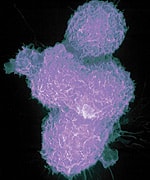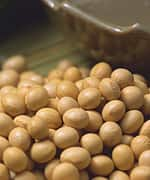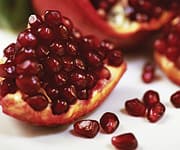Life Extension Magazine®
Prostate cancer kills 31,000 men in the US each year. Over 220,000 are diagnosed with the disease each year—the equivalent of a new diagnosis every 2.6 minutes. A man’s lifetime chance of developing this cancer is about one in six. At this writing, prostate cancer is present in more than 9 million American men. Ready for some good news? Prostate cancer is nearly 100% survivable if detected early. At the New York Presbyterian Hospital/Columbia University Holistic Urology Center, we are well versed in the use and value of allopathic therapies for prostate cancer. I teach surgical, pharmacologic, and chemotherapeutic/radiation treatment methods to medical students here. Many patients with prostate cancer will benefit from some kind of surgery, and in late-stage cancer, we can use hormone-ablating drugs, chemotherapy, and radiation to extend life and relieve pain. However, ours is unique among urological medical centers in that we also apply knowledge from alternative medicine to help heal our patients. We use scientifically validated herbal and nutritional medicines to support the patient’s body as it resists the cancer. Many of these medicines have demonstrated the ability to slow or reverse the growth of prostate cancer cells through various biological mechanisms. Our team at the Holistic Urology Center is doing groundbreaking research on several of these natural medicines, publishing it in peer-reviewed journals, and presenting it at major scientific conferences. These are steps that must be taken by medical science in order to establish the safety and effectiveness of herbal and nutritional chemopreventive agents—substances that help to forestall the development or progression of cancer—and their value as part of a complementary medical approach to prostate cancer. The natural or “holistic” approach may be particularly beneficial in patients who are diagnosed with very early prostate cancer that is less likely to spread. Due to widespread screening for prostate cancer using the prostate-specific antigen (PSA) blood test, many men diagnosed in 2006 have low Gleason scores of 6 or less (higher Gleason scores are associated with worse prognosis), or have a precancerous condition called prostatic intraepithelial neoplasia, or PIN. Moving Beyond “Watchful Waiting”Men who are diagnosed with small, early-stage, less-aggressive prostate cancer—especially men who are older or have some other disease that makes surgery more dangerous—may be told by their urologist to “watch and wait.” The logic behind this is that the treatments usually applied could do more harm than good in such patients. I think this watchful waiting approach is inappropriate.
This is not to say that we should intervene surgically and thereby risk potentially life-altering side effects to eradicate a cancer that will never be life threatening. The alternative to watchful waiting is applying holistic therapies that have growing scientific support in favor of benefit and almost no potential for doing harm. In patients who are good candidates for more-aggressive medical treatments—including surgery or medications—I have found that applying holistic therapies as part of a comprehensive treatment plan improves outcomes. Most urologists still rely exclusively on allopathic treatments for prostate cancer, and the advances in these treatments—along with early detection—seem to be paying off. According to the federal Centers for Disease Control and Prevention, the overall survival rate for prostate cancer has gone from 67% in the 1980s to nearly 97% today. (This figure obscures the fact that the prostate cancer death rate for African-Americans, Hispanics, and American Indian/Alaskan Natives is nearly twice that of Caucasians).1 Adding holistic therapies to our array of treatments can only improve the odds that you (or a man in your life) will never die of prostate cancer. Prostate Cancer ChemopreventionChemoprevention is the use of agents that prevent the induction, growth, or progression of cancer. Prostate cancer has a long latency period, which means that it grows slowly and may exist for years before it is detected or causes symptoms. We can use this to our advantage when it comes to chemoprevention strategies. Research from the Center for Holistic Urology and elsewhere strongly suggests that if every man who was told to “watch and wait” entered into a focused chemoprevention program, we could slow or stop the progression of the disease—and would probably see improvement in virtually every other aspect of his health. The major factors we address in prostate cancer chemoprevention are inhibiting oxidation and inflammation. We can use herbs, nutritional supplements, and dietary changes to address these factors that create and accelerate the disease. Prostate cancer chemoprevention will likely also help to prevent heart disease, osteoarthritis, benign prostatic hypertrophy (BPH, or nonmalignant enlargement of the prostate gland), and prostatitis (inflammation of the prostate, usually caused by either bacterial infection or autoimmunity). Oxidative stress is believed to be a strong link between diet and prostate cancer. Measurements of oxidation are significantly higher in the cancerous prostate than in the non-cancerous prostate.2 Inflammation creates an additional free-radical burden, contributing to an escalating cycle in the prostate gland that sets the stage for the precancerous condition called prostatic intraepithelial neoplasia (PIN) and for cancer itself.3 The Precancerous Prostate: PINProstatic intraepithelial neoplasia is not cancer, but it is a portent of the disease.4 We also refer to PIN as dysplasia, a generic term for abnormal cells that are likely to turn cancerous at some time in the future. Prostate cancer begins with very small changes in the size and shape of the prostate gland cells. These changed cells then proliferate throughout the prostate. PIN does not affect serum prostate-specific antigen (PSA) concentration; it is detected only when we do a biopsy. Men who have prostate cancer have areas of PIN in their prostates in more than 85% of cases,5 and it can appear up to 10 years before a diagnosable cancer. In a series of 249 autopsy cases, approximately three quarters of the prostates with high-grade (severe) PIN harbored invasive adenocarcinoma, compared to only one quarter without high-grade PIN. When we detect PIN, allopathy has no treatment for it. Usually, the recommendation is “watchful waiting.” This is prime time for the use of nutrients and herbs to decrease the inflammation that creates PIN and may transform it into full-blown cancer. Anti-Inflammatory Nutrients for PINProstaglandins and leukotrienes are eicosanoids, or hormone-like chemicals created in the body from the fats we eat. They are manufactured through a cascade of biochemical reactions that involve the action of specific enzymes, including the COX (cyclooxygenase) enzymes, which mediate prostaglandin production, and the LOX (lipoxygenase) enzymes, which mediate leukotriene production.
The COX-2 enzyme is a well-known mediator of inflammation and plays a pivotal role in the creation of prostaglandins that accelerate inflammation. Anti-inflammatory COX-2 inhibitor drugs are designed to inhibit this single enzyme, in hopes of reducing the flames of inflammation at their source. However, these drugs do not affect other enzymes that also play a role in inflammation, including the LOX enzymes that create leukotrienes. Think of the COX and LOX enzymes as “matches” that light inflammatory flames. Now, imagine that we snuff out one match: as long as there is still fuel to burn, the other match is adequate to get the fire going. COX and LOX enzymes are strongly affected by diet. When we overconsume foods rich in omega-6 fats (conventional meats, dairy products, and refined vegetable oils, including hydrogenated oils rich in trans fats), refined flour, and sugar, we predispose the body to overreacting to any insult that causes inflammation, because we push the balance of eicosanoid production towards the side of inflammation. Some people are more prone than others to this kind of overreaction, probably due to genetic differences. Benign prostatic hypertrophy (BPH), non-bacterial prostatitis, prostate cancer, and PIN have all been linked with a heightened state of chronic inflammation—as have Alzheimer’s disease and heart disease. Chronic inflammation puts us at increased risk of developing cancerous growths in the area of the body where that inflammation occurs. PIN is likely the first sign that inflammation is altering the cells of the prostate. Studies of COX-2 inhibition with drugs like Vioxx® and Celebrex®—which many hoped would be useful in preventing colon cancer in people with precancerous polyps—demonstrated that COX-2 inhibition will reduce one fire, but will also increase other types of inflammation.6 A study at the MD Anderson Cancer Center found that inhibiting the COX pathway caused an activation of the LOX pathway, increasing the “fires” started by LOX enzymes. Moreover, it appears that this LOX pathway is an important one in the development of PIN and prostate cancer. Prostate cancer is driven by LOX metabolites. Inhibiting 5-LOX metabolites in test-tube studies causes a rapid, massive die-off of prostate cancer cells. The activity of the lipoxygenase enzymes creates 5-LOX, one of the hormone-like leukotrienes. 5-LOX is turning out to be important to our understanding of the interaction between inflammation and prostate cancer. Substantial research evidence tells us that if we suppress 5-LOX—and, by so doing, reduce the formation of another biochemical known as 5-hydroxyeicosatetraenoic acid (5-HETE)—we can slow or stop prostate cancer growth. 5-HETE is essential to the survival of prostate cancer cells, and by inhibiting its production, we can effectively starve a prostate tumor. We can send immortal cancer cells back into the series of biochemical reactions that lead to programmed cell death, and we can work against other processes that encourage tumor growth and spread. And we can achieve this with combinations of herbs that work to downplay the actions of the LOX and COX enzymes. As we learned all this from our research and others’ studies, we reasoned that broad inhibition of pro-inflammatory enzymes made more sense than targeted, selective inhibition. Thus, we looked at herbs that could achieve this end.
Unlike highly selective, pharmaceutical COX-2 inhibitors, herbal anti-inflammatories inhibit the activity of the COX and LOX pathways. Aspirin does as well, but aspirin and other less-selective nonsteroidal anti-inflammatory drugs (NSAIDs) are still more specific and targeted than herbs, which creates the risk of gastrointestinal bleeding—a side effect that hospitalizes tens of thousands of people each year. At the Center for Holistic Urology, we have been conducting studies to determine whether herbs with anti-inflammatory and antioxidant actions can be used to slow or reverse the progression of PIN into prostate cancer. In 2002, my research team from Columbia presented the results of a study on a combination of 10 anti-inflammatory herbs at a meeting for the Society of Urologic Oncology at the National Institutes of Health. We found that this formula suppressed the growth of prostate cancer cells and caused many to undergo programmed cell death (apoptosis). We are currently evaluating a group of 35 patients with biopsy-proven PIN who are using this herbal combination, which includes rosemary, turmeric, ginger, green tea, oregano, Chinese goldthread, and barberry. All of these herbs have some effect on the enzymes that mediate inflammation—specifically, the COX and LOX enzymes that we know play roles in prostate carcinogenesis. Our results at this point are preliminary, but they are certainly promising. In this Phase I clinical trial, patients take this herbal combination daily for 18 months. Every six months, they have another biopsy, and those tissues are analyzed for molecular markers of inflammation that show us whether they are progressing toward cancer. We also measure PSA at each six-month follow-up visit. Of the 26 patients who have had at least two follow-up visits, 13 have had a decrease in PSA. Forty-six percent of these men had a greater than 10% decrease, and 27% had over a 50% decrease. To date, 35 biopsies have been performed on 21 patients in the study; in 31 of the 35 biopsies, cancer had not developed, and 21 of them have been normal, showing no PIN or cancer. Four patients did develop cancer, but their tumors were very small, with good prognosis for a complete cure. (Comment by Stephen B. Strum, MD: Suggest all biopsy material prior to start of the study be studied for EPCA [early prostate cancer antigen] to see if some of the cases of prostate cancer were present prior to the initiation of medication.) Other herbs known to help control prostate inflammation and carcinogenesis include pygeum, nettle root (Urtica dioica), saw palmetto, and frankincense (Boswellia serrata). Each has its own base of support in the scientific research of chemopreventive agents.7-10
| ||||||||
Lycopene, Vitamin E, and SeleniumAn association has been found between high lycopene consumption and low risk of prostate cancer,11 and men who are diagnosed with this disease tend to have lower levels of lycopene in their bodies.12 Lycopene supplements are a helpful part of a chemoprevention program; they can slow the growth of tumors and lower PSA scores in men with prostate cancer. A potent carotenoid, lycopene has been investigated in preclinical and clinical studies, with interesting findings. We have recently explored the role of this antioxidant before radiation treatment and have found an increased cell death rate in animal tumors that were treated with lycopene prior to radiation. Vitamin E is protective against prostate cancer; every man should take a minimum of 240 IU of vitamin E a day to protect against oxidative stress in the prostate.13,14 Selenium helps vitamin E to do its job of reducing oxidative stress. Population studies find that men with higher selenium intake have significantly lower prostate cancer risk—as well as lower risk for many other cancers. We recommend that men use this nutrient to prevent prostate cancer as well.15,16 One study linked selenium supplementation to a 63% reduction in prostate cancer recurrence in 974 men with a history of the disease.17 A trial of selenium and vitamin E chemoprevention is currently under way. The Selenium and Vitamin E Cancer Prevention Trial (SELECT) is a 12-year, Phase III, randomized, placebo-controlled trial involving 32,400 men at about 300 research centers in the United States and Canada. The subjects take 200 mcg of selenium (as L-selenomethionine) and/or 400 IU of vitamin E each day.18 This double-blind, population-based clinical trial will test the efficacy of selenium and vitamin E, alone and in combination, for the prevention of prostate cancer. The primary endpoint is the clinical incidence of prostate cancer, as determined by routine clinical diagnostic work-up, including yearly digital rectal exam and serum PSA level. Study enrollment began in 2001, and final results are anticipated in 2013. It is the largest trial ever mounted to evaluate the chemopreventive value of nutrients, singly or in combination. Our own research on patients with PIN supports the daily use of 400 IU of vitamin E, 200 mcg of selenium, and 20 mg of lycopene for chemoprevention.
Green Tea Polyphenols Show PromiseAlthough the term polyphenol refers to a class of food-derived chemicals containing a polyhydroxyphenol group, it has been adopted to broadly describe any botanical or herbal agent with antioxidant properties. Historical evidence and epidemiological studies were the first to suggest the potential anti-cancer benefit of drinking green tea for reducing breast, colon, and prostate cancer incidence.19-23 The most common green tea plant is Camellia sinensis, and the major active ingredients of green tea are thought to be the catechins. The excellent preclinical and Phase I data on green tea polyphenolic compounds suggest interesting potential for using green tea as a chemopreventive agent. Ongoing clinical trials in various precancerous, preventive, and adjuvant settings will determine the usefulness of this widely studied agent. Benefits of Soy Compounds
The active component within soy is believed to be genistein. We have been studying Genistein Combined Polysaccharide (GCP®), a nutritional supplement made by Amino Up Chemical Company, Ltd. It is prepared by fermenting soy extract with basidiomycetes mushrooms, a process that increases the bioavailability of the plant-derived estrogenic compounds, also known as isoflavones, found naturally in soy products. Genistein is the bioactive form of the isoflavone found at the highest concentration in soy. Isoflavones have been reported to have estrogenic and anti-estrogenic activity, as well as anti-tumor effects that are unrelated to estrogen activity. Evidence from epidemiological and preclinical studies suggests that isoflavones protect against hormone-related cancers, such as breast, colon, and prostate cancers. Laboratory studies of isoflavones support their role in therapy for both prostate and bladder cancers. Researchers examined the effects of pure soy isoflavones (genistein, genistin, daidzein, and biochanin A) and soy phytochemical concentrate on the growth of mouse (murine) and human prostate cancer cell lines in vitro and in vivo. The soy isoflavones dose-dependently inhibited the growth of prostate cancer cell lines in vitro. Feeding mice inoculated with prostate carcinoma cells a diet enriched with genistein or soy products decreased tumor size, reduced angiogenesis, increased apoptosis, and slightly reduced cancer cell proliferation.24 Pomegranate Inhibits Cancer Cell ProliferationPomegranate (Punica granatum) is widely consumed as a fruit and juice, and both anecdotal and epidemiological evidence suggests that pomegranate juice may be a valuable cardioprotective agent and antioxidant.25,26 Constitutional analysis of pomegranate seeds and husks reveals that they contain sugars, sterols, proteins, pectins, and potent polyphenolic compounds, including punicalagins and ellagic acid, of which punicalagins seem to be the most widely active and abundant constituent.
While there are only a few studies of pomegranate extract as a chemopreventive agent in prostate cancer, the initial studies suggest that various pomegranate compounds may act synergistically to enhance pomegranate’s anti-proliferative activities in prostate cancer cell lines. These same studies noted that pomegranate fractions may also inhibit the action of aggressive PC-3 cells. In the most recent study of pomegranate juice supplementation in men with prostate cancer,27 a daily eight-ounce glass of pomegranate juice significantly increased PSA doubling time, thereby increasing the disease-free survival period. (Comment by Stephen B. Strum, MD: The study was fully accrued after efficacy criteria were met. There were no serious adverse events reported. None of the patients developed metastatic disease. Mean PSA doubling time significantly increased with treatment, from a mean of 15 to 54 months [P < 0.048]. In vitro assays using pre- and post-treatment patient serum on the growth of LNCaP showed a 12% decrease in cell proliferation and a 17% increase in apoptosis [P = 0.0048 and 0.0004, respectively]. Other Herbal CompoundsAt the Center for Holistic Urology, we have been exploring a combination of herbs to determine whether they can affect rising PSA levels in men with a negative prostate biopsy. One of these herbs, Pao pereira bark extract, originates in the Amazon rain forest and has been used for centuries to fight disease and relieve fever. The other compound is Rauwolfia vomitoria extract, a tropical African shrub traditionally used as a laxative and hormonal regulator. If You Are Diagnosed: Surgical OptionsLet’s say your PSA score comes back high after a routine check-up. Your doctor feels a suspicious lump during the manual prostate exam, and a biopsy reveals that you have prostate cancer. Staging and Gleason grading indicate that the disease is localized, but should be treated. What next? You have a lot of options. The surgical options for men with prostate cancer have never been as extensive as they are today. And no matter what the stage of prostate disease, you can benefit from the chemopreventive measures already described. Radical ProstatectomyA couple of decades ago, radical prostatectomy—full-on removal of the entire prostate gland—was the gold standard of treatment. This surgery is still the preferred route for men under 65 years of age who have localized disease. It has high cure rates for disease that has not spread beyond the prostate. The problem is that a certain percentage of men who undergo radical prostatectomy may end up incontinent, impotent, or both. A radical prostatectomy involves removal of the entire prostate gland and seminal vesicles, and, depending on the circumstances, sampling the lymph notes within the pelvis. (The lymph nodes are checked by a pathologist to see whether the disease has spread. Depending on what is found, additional treatments—including radiation, chemotherapy, or treatment with drugs that block testosterone production—may be recommended.) We perform several versions of radical prostatectomy, including:
Today, your chances of having a prostatectomy without suffering impotence or incontinence are better than ever, thanks to advances in surgical techniques seen over the past decade. A couple of the newer techniques are:
CryosurgeryCryosurgery, also called cryoablation, involves freezing cancer cells to death. We do this with pinpoint accuracy in fractions of a second. We use ultrasound to guide the placement of cryoneedles into the appropriate areas of the prostate. Argon gas is pumped through the needles to rapidly cool cancerous areas. After the tissue is frozen, helium gas is run through the same needles to thaw the tissue.
In seven- to eight-year studies, cryoablation has an 89-92% success rate as a primary treatment for localized or locally advanced disease (meaning disease that has spread just beyond the prostate). I have also used cryosurgery to treat patients who undergo radiation and later have a recurrence. Our long-term results using cryosurgery in patients like these have been excellent. Ninety-seven percent of them survived for at least 10 years after the procedure. Only 12% of men who receive cryotherapy have a positive biopsy after treatment. Cryoablation is now approved by the FDA and covered by Medicare. It is proving effective for men whose cancers have spread to areas just beyond the prostate, or those who have aggressive tumors (signified by a Gleason grade of 7 or higher). It is also a good alternative for men who cannot or prefer not to have surgery or radiation. We perform cryosurgery in the hospital with either general or spinal (epidural) anesthesia. Some patients are advised to take hormone-blocking drugs to help shrink the prostate before undergoing surgery. Most procedures are done in an hour and a half at most. The cryoneedles are guided through the perineum, under the scrotum. In two or more freeze-thaw cycles, we freeze cancer cells to death, using thermocouples and a urethral warming device to protect healthy tissues from damage. If all goes well, the patient will be sent home that day or the next, and for a week or so will use a urethral catheter to drain urine from the bladder into a bag worn on one thigh. In the past, impotence rates were very high after cryoablation. Currently, we are having much greater success in men with low-risk cancer, as the nerve bundles do not have to be frozen. We now have a way of accurately measuring the temperature outside the gland in the area of the nerve bundles. We can extend the ice to the capsule (the membrane covering the prostate) and eradicate the cancer in this region, while sparing sexual function. In the past three years, we have started a focal cryoablation program. For men with a small focus of cancer on one side of the gland, and a low Gleason score of 6 or less, the cancer can be ablated with a few needles. This appears to be a very effective mode of therapy for this subset of patients. What About Drugs, Radiation, and Chemotherapy?When we talk about drugs for prostate cancer treatment, we are referring to either chemotherapy agents or hormone-ablating drugs. Hormone ablation is often used as part of a cancer treatment plan that may also include surgery, chemotherapy, and radiation. Because drug treatments almost always have side effects, they are best avoided, and hopefully you can do so with the correct chemopreventive measures. If you would like to learn more about drug, chemotherapy, and radiation therapy for prostate cancer—and about holistic ways to address the potentially significant side effects of these sometimes necessary therapies—please refer to my book, Dr. Katz’s Guide to Prostate Health: From Conventional to Holistic Therapies (Freedom Press, 2005). The book also contains information about holistic treatments for benign prostatic hypertrophy (BPH) and prostatitis, in addition to more in-depth information about prostate cancer chemoprevention and treatment. Dr. Katz is associate professor of urology and director of the Center for Holistic Urology at Columbia University Medical Center in New York. | |||||||
| References | |||||||
| 1. Available at: http://www.cdc.gov/cancer/prostate/prospdf/Prostate-FS2003.pdf. Accessed November 27, 2006. 2. Biri H, Ozturk HS, Kacmaz M, et al. Activities of DNA turnover and free radical metabolizing enzymes in cancerous human prostate tissue. Cancer Invest. 1999;17(5):314-9. 3. Nelson WG, De Marzo AM, DeWeese TL, Isaacs WB. The role of inflammation in the pathogenesis of prostate cancer. J Urol. 2004 Nov;172(5 Pt 2):S6-11. 4. Nelson WG, De Marzo AM, DeWeese TL, et al. Preneoplastic prostate lesions: an opportunity for prostate cancer prevention. Ann NY Acad Sci. 2001 Dec;952:135-44. 5. McNeal JE, Bostwick DG. Intraductal dysplasia: a premalignant lesion of the prostate. Hum Pathol. 1986 Jan;17(1):64-71. 6. Schroeder CP, Yang P, Newman RA, Lotan R. Eicosanoid metabolism in squamous cell carcinoma cell lines derived from primary and metastatic head and neck cancer and its modulation by celecoxib. Cancer Biol Ther. 2004 Sep;3(9):847-52. 7. Yablonsky F, Nicolas V, Riffaud JP, Bellamy F. Antiproliferative effect of Pygeum africanum extract on rat prostatic fibroblasts. J Urol. 1997 Jun;157(6):2381-7. 8. Krzeski T, Kazon M, Borkowski A, Witeska A, Kuczera J. Combined extracts of Urtica dioica and Pygeum africanum in the treatment of benign prostatic hyperplasia: double-blind comparison of two doses. Clin Ther. 1993 Nov;15(6):1011-20. 9. Carani C, Salvioli V, Scuteri A, et al. Urological and sexual evaluation of treatment of benign prostatic disease using Pygeum africanum at high doses. Arch Ital Urol Nefrol Androl. 1991 Sep;63(3):341-5. 10. Obertreis B, Giller K, Teucher T, Behnke B, Schmitz H. Anti-inflammatory effect of Urtica dioica folia extract in comparison to caffeic malic acid. Arzneimittelforschung. 1996 Jan;46(1):52-6. 11. Giovannucci E, Ascherio A, Rimm EB, et al. Intake of carotenoids and retinol in relation to risk of prostate cancer. J Natl Cancer Inst. 1995 Dec 6;87(23):1767-76. 12. Rao AV, Fleshner N, Agarwal S. Serum and tissue lycopene and biomarkers of oxidation in prostate cancer patients: a case-control study. Nutr Cancer. 1999;33(2):159-64. 13. Fleshner N, Fair WR, Huryk R, Heston WD. Vitamin E inhibits the high-fat diet promoted growth of established human prostate LNCaP tumors in nude mice. J Urol. 1999 May;161(5):1651-4. 14. Anon. The effect of vitamin E and beta carotene on the incidence of lung cancer and other cancers in male smokers. The Alpha-Tocopherol, Beta Carotene Cancer Prevention Study Group. N Engl J Med. 1994 Apr 14;330(15):1029-35. 15. Clark LC, Combs GF, Jr., Turnbull BW, et al. Effects of selenium supplementation for cancer prevention in patients with carcinoma of the skin. A randomized controlled trial. Nutritional Prevention of Cancer Study Group. JAMA. 1996 Dec 25;276(24):1957-63. 16. Clark LC, Marshall JR. Randomized, controlled chemoprevention trials in populations at very high risk for prostate cancer: Elevated prostate-specific antigen and high-grade prostatic intraepithelial neoplasia. Urology. 2001 Apr;57(4 Suppl 1):185-7. 17. Clark LC, Dalkin B, Krongard, et al. Decreased incidence of prostate cancer with selenium supplementation: results of a double-blind cancer prevention trial. Br J Urol. 1998 May;81(5):730-4. 18. Lippman SM, Goodman PJ, Klein EA, et al. Designing the Selenium and Vitamin E Cancer Prevention Trial (SELECT). J Natl Cancer Inst. 2005 Jan 19;97(2):94-102. 19. Fujiki H. Green tea: Health benefits as cancer preventive for humans. Chem Rec. 2005;5(3):119-32. 20. Borrelli F, Capasso R, Russo A, Ernst E. Systematic review: green tea and gastrointestinal cancer risk. Aliment Pharmacol Ther. 2004 Mar 1;19(5):497-510. 21. Saleem M, Adhami VM, Siddiqui IA, Mukhtar H. Tea beverage in chemoprevention of prostate cancer: a mini-review. Nutr Cancer. 2003;47(1):13-23. 22. Nakachi K, Eguchi H, Imai K. Can teatime increase one’s lifetime? Ageing Res Rev. 2003 Jan;2(1):1-10. 23. Gupta S, Ahmad N, Mukhtar H. Prostate cancer chemoprevention by green tea. Semin Urol Oncol. 1999 May;17(2):70-6. 24. Zhou JR, Yu L, Zhong Y, et al. Inhibition of orthotopic growth and metastasis of androgen-sensitive human prostate tumors in mice by bioactive soybean components. Prostate. 2002 Oct 1;53(2):143-53. 25. Wang RF, Xie WD, Zhang Z, et al. Bioactive compounds from the seeds of Punica granatum (pomegranate). J Nat Prod. 2004 Dec;67(12):2096-8. 26. Seeram NP, Adams LS, Henning SM, et al. In vitro antiproliferative, apoptotic and antioxidant activities of punicalagin, ellagic acid and a total pomegranate tannin extract are enhanced in combination with other polyphenols as found in pomegranate juice. J Nutr Biochem. 2005 Jun;16(6):360-7. 27. Pantuck AJ, Leppert JT, Zomorodian N, et al. Phase II study of pomegranate juice for men with rising prostate-specific antigen following surgery or radiation for prostate cancer. Clin Cancer Res. 2006 Jul 1;12(13):4018-26. |








